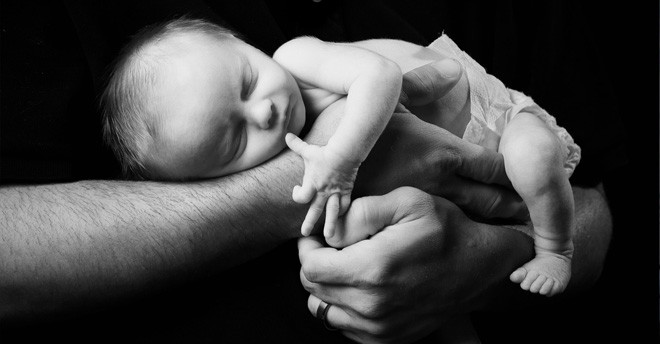

The first belligerent cry of a newborn announcing its arrival into the world is always music to Rabia Soomro’s ears. "It gives me the reassurance that the baby is fine," says the midwife from Dadu.
Trained as a community midwife since 2008, Rabia says she has delivered "hundreds of babies" and, by her own admission, "lost quite a few too" as she didn’t know how to treat birth asphyxia, one of the primary causes of newborn death in Pakistan.
The World Health Organisation (WHO) defines neonatal asphyxia as the failure to establish breathing at birth, and states it accounts for an estimated 900,000 deaths each year, globally.
Recently, however, Soomro learnt how to help babies breathe through a training programme organised by the USAID-funded Maternal and Child Health Integrated Programme (MCHIP) in Pakistan.
She is among the 226 skilled birth attendants (SBAs) trained in five districts of Sindh that the MCHIP is working in, to follow, the protocols in the first 60 seconds of the baby’s life -- known as the Golden Minute -- which makes the difference between the baby’s life or death. Helping Babies Breath (HBB), developed by the American Academy of Pediatrics with input from the World Health Organisation, is one such programme that equips the birth attendants in a resource-limited setting to address asphyxia. The MCHIP aims to train all the active CMWs on HBB in the coming months in their targeted districts.
According to Dr Zulfikar Bhutta, founding director of the Centre for Excellence in Women and Child Health at the Aga Khan University, "Many of our facilities do not have basic equipment for resuscitation and trained staff. You can well imagine that only a fraction of asphyxiated babies have access to care in Pakistan."
Even in larger hospitals, this has remained a major gap. According to Dr Bhutta, the facility-based coverage in Pakistan for effective resuscitation (functional equipment and round the clock trained staff) is less than 20 per cent. "There are clear urban and rural as well as inter-provincial gaps here," says Bhutta, who was recently presented with the 2014 WHO Ihsan Do?ramac? Family Health Foundation Prize, during the WHO’s World Health Assembly in Geneva.
Soon after, using the techniques Soomro saved three babies and, thus, her elation. "I never paid much attention to the baby’s needs once it was born except covering it. If it did not cry, all I did was wipe the inside of the mouth with a cloth and when that did not help I gave mouth-to-mouth," she says.
Little wonder then, Bhutta says, "Most die unnoticed and are frequently misclassified by traditional birth attendants as stillborn".
The most risky period, he says, is around childbirth -- and that is where the gap lay. If he was tasked to bring the number of neonate deaths down he would start with "scaling up of SBA services and facility births".
These gaps are apparent in the high number of neonate deaths in Pakistan.
For some reason, newborns seem to be slipping through health professionals’ fingers with 231,400 stillborn and 202,400 dying in the first week of their birth every year in Pakistan.
This has been pointed out in The Lancet’s latest Every Newborn Series, of which Bhutta is among the co-authors. It identifies the most effective interventions in saving newborns, including breastfeeding, newborn resuscitation, ‘kangaroo care’ for premature babies -- this is, prolonged skin-to-skin contact with the mother, and preventing and treating infections and newborn resuscitation.
Based on the findings from The Lancet series, this month, Unicef and WHO will roll out the Every Newborn Action Plan to end preventable maternal and child deaths by 2035.
Bhutta laments there has been no change in neonatal mortality in Pakistan for almost 35 years. "In the list of countries with the highest rates of neonatal mortality, Pakistan is the only Asian country other than African countries," he says. "Even Afghanistan has managed to dent neonatal mortality, while we haven’t."
He says he has been "making the case for newborn survival in Pakistan for almost 25 years but it has largely fallen on deaf policy ears".
Given that in the next decade births at health facilities are going to increase (right now it is 52 per cent) substantially, Dr Farid Midhet, who heads the MCHIP in Sindh, points out that it was imperative as well as an opportunity to save both maternal and neonatal mortality and morbidity by "providing high quality prenatal care, delivery care, basic emergency obstetric and neonatal care, postnatal and neonatal care including cord care and HBB, immunisation and nutrition care".
The MCHIP is already working to improve access to mother and child health (MNCH) centres -- facilities that provide a full range of obstetric and neonatal care, including basic emergency obstetric and neonatal care.
Bhutta points out that India has managed to get facility births to over 80 per cent in just seven to eight years using a conditional cash transfer programme and now rightly works on improving quality of care. "We have the largest cash transfer programme ever," he says referring to the Benazir Income Support Programme. "But we haven’t linked that to any health benefits".
The question is, does putting in more money necessarily guarantee better quality?
"We need a system of quality improvement, a self-assessment of quality and a recognition and reward system," agrees Midhet, adding that the MCHIP is working to institutionalise quality improvement inside health facilities "the way it’s done in developed countries".
The Lancet series cites a survey of 51 countries with the highest burden of newborn deaths and found that if the quality of care received by the richest were to become universal, there would be 600,000 fewer deaths per year -- an almost 20 per cent reduction.